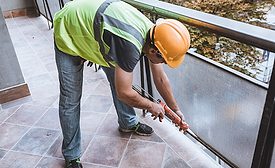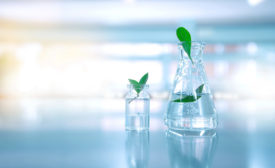Featured on Home Page
Strategic Solutions
Though bioinspired approaches to adhesive R&D often lead to great improvements in the lab, translating these sophisticated chemistries to commercial scale is a considerable challenge.
Read More
Focusing on Research and Development in the Adhesives and Sealants Industry
Though the events of the past two years have posed significant potential roadblocks to research and development efforts, companies in the adhesives and sealants industry are still focused on innovation.
June 6, 2022
What Makes a Good Construction Adhesive?
Adhesive manufacturers continue to innovate and offer products that meet the evolving needs of the construction industry.
June 2, 2022
Industry Reunites at World Adhesive and Sealant Conference
The long-anticipated 2022 World Adhesive and Sealant Conference was well worth the wait.
May 31, 2022
From the Editor
A Structural Shift: Replacing Mechanical Fasteners with Structural Adhesives
While structural adhesives provide step-change innovations beyond mechanical fastening, multiple factors need to be taken into consideration to ensure optimal results.
May 26, 2022
Advancing Coatings
A Quantum Leap for Coatings Formulations
A new partnership is exploring the creation of more advanced and sustainable coatings products through quantum computing.
May 24, 2022
Striving for Sustainability
Renewable Carbon and the Quest for a Reduced Carbon Footprint
Lots of options are available for companies that are trying to address sustainability. What is renewable carbon, and how can it play a role in reducing an organization’s carbon footprint?
May 20, 2022
Live from Tape Week 2022
Joe Tocci, president of the Pressure Sensitive Tape Council (PSTC), shares information about the recently held Tape Week, some of the PSTC’s activities, and challenges and opportunities for the tape industry.
May 19, 2022
Specialty Chemicals Insights
Focusing on Workforce Development in the Adhesives and Sealants Industry
Employee training is vital to improve core competencies and increase productivity and capabilities across all sectors.
May 18, 2022
Market Trends
Opportunities for Bio-Based Adhesives
Bio-adhesives have rapidly gained traction as an alternative to traditional synthetic adhesives.
May 16, 2022
Keep the info flowing with our eNewsletters!
Get the latest industry updates tailored your way.
JOIN TODAY!Copyright ©2024. All Rights Reserved BNP Media.
Design, CMS, Hosting & Web Development :: ePublishing





.jpg?height=168&t=1655243892&width=275)

.jpg?height=168&t=1654641653&width=275)




